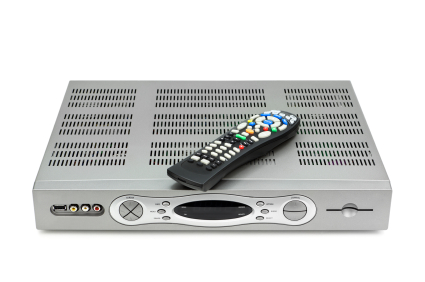Unlocking the Set-top Box: Creating Choice & Innovation
By: Chris Piedmonte

The set top box has been a fixture in our homes for almost half a century. With the broadcast television spectrum gasping its last breath, the delivery of traditional televised video content is now the domain of the satellite, cable and telco providers, ensuring the presence of the set top box for many years to come.
But will the set top box continue to be the exclusive domain of the cable, satellite and telco companies that provide them, or is there the possibility of an open standard set top box? Can the set top box become an open platform for innovation and the delivery of new applications?
US FCC Votes to Unlock the Box
Recent FCC rulings in the U.S. have paved the way for opening up the set top box to competitive market forces. On February 18th, the United States Federal Communications Commission approved a Notice of Proposed Rulemaking (NPRM) that may open up the set top box to competitive market forces. With a vote of 3-2 clearly split down party lines (Chairman Tom Wheeler and fellow Democrats Mignon Clyburn and Jessica Rosenworcel voting for, Republicans Ajit Pai and Michael O'Rielly against), we can now expect months of open public comment before a final vote sometime before the end of this year.
Should the FCC pass this proposal, they would create a market in which cable, satellite and telco providers of video and audio content would have to accommodate third-party devices for receiving and managing content. This would allow consumers to purchase content delivery from the various providers, but chose third–party devices for managing that content: a significant disruption to a long-term practice of the industry.
Should the ruling pass, cable and satellite companies will have two years to comply with the specifics of the ruling. This will include delivering as part of their service information streams to makers of other set-top boxes and applications for them. The information streams will include channel listings, video-on-demand lineups, content restriction information (such as recording permission), and other data for managing the video and audio content available. The FCC is not mandating a specific standard. Instead, the commission said it recommends that the information streams "be available to the creators of competitive solutions using any published, transparent format that conforms to specifications set by an independent, open standards body."
Commenting that the burden on the providers is not high and that the changes are minimal, Wheeler said, "These are two systems that work the same. The difference is one is closed and one is open.”
Not everyone is in favor of these open standards. As expected, Comcast Senior Executive VP David Cohen said, "Today’s action inexplicably ignores the market-driven 'apps' based approach suggested by the technical committee [that advised the FCC], which is rapidly proliferating in the market and giving consumers unprecedented options to receive video programming services. Unfortunately, the majority of Commissioners have chosen to ignore the many voices of reason and instead to pursue a proposal that strays well beyond the FCC’s authority under the Communications Act, and would violate copyright and other statutory and constitutional protections."
An Open-Standard Committee
The goal of the FCC is to create open standards for innovative devices and software applications to compete effectively in managing the content provided by the cable, satellite and telco companies, now referred to as Multichannel Video Programming Distributors (MVPDs). The idea is to foster competition and innovation around the user interfaces, environment experience, features and future innovations around the integration with home entertainment systems and communications.
The proposal calls for the establishment of an independent standards committee to oversee the establishment of the open standards to be adopted by the industry. This body will likely be composed of representatives from the industry as well as independent contributors in an attempt to assure neutrality and fairness. The FCC is calling for five specific characteristics of this body, including openness in membership, a balance of interests, due process, an appeals process, and consensus voting.



















